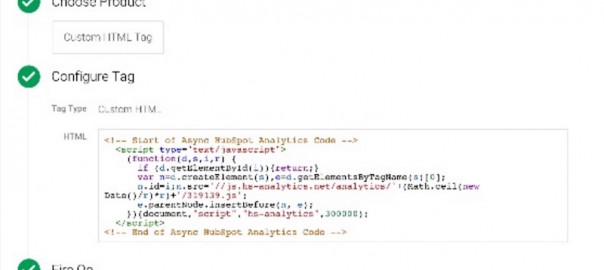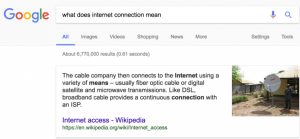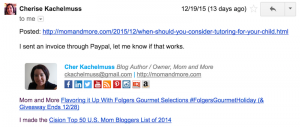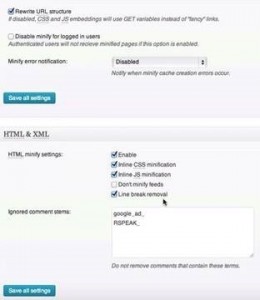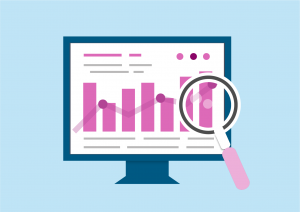How do you successfully track how your online campaigns are influencing consumers’ offline activities? Columnist Mark Traphagen recaps a session at SMX West that explored the answer to this question and more.
 Sooner or later, most marketers come to realize that their analytics software never tells the whole story. Most web analytics programs are designed to track and account for online behavior.
Sooner or later, most marketers come to realize that their analytics software never tells the whole story. Most web analytics programs are designed to track and account for online behavior.
But, of course, customers don’t only live online (not even Millennials!).
At SMX West in San Jose, California, this year, two industry veterans demonstrated how to track identity and behavior that doesn’t happen on websites.
Location-based optimization (LBO): The next SEO

David Shim, CEO of Placed
“Clicks are for kids; store visits are for adults.”
So goes the mantra of location optimization guru David Shim, CEO of Placed. He noted that 92 percent of retail transactions take place offline, but businesses only optimize for about eight percent of those.
More consumers than ever are going from digital to physical. In other words, they start their solution search online but end up in a physical store for their purchase.
In many cases, they are going back and forth between the two, or even using digital to do research while they are in a physical store. But businesses are missing most of that activity.
If we’re only tracking online behavior, then we are likely often declaring campaigns failures that might actually be succeeding. Clicks do not necessarily equal store visits. Sometimes campaigns with the lowest CTR (click-through rate) prove to drive the highest number of store visits.

Location, in particular, is largely ignored. Only eight percent of mobile optimization effort is invested toward location. Shim says it should probably be more like 50 percent.
Location-based optimization (LBO) will eventually match digital in terms of optimization investment. The metrics end up being similar to digital.

It is more important to measure lift from online ads than conversion of total store visits. How much higher is the conversion rate for those who saw the digital ad (exposed) vs. those who didn’t (unexposed)?
In the example above, dividing the ad-exposed conversion rate by the unexposed conversion rate yields the “lift,” the percentage by which the digital ad increased in-store conversions. Then dividing the total number of store visits by the lift yields the “lift store visits” (the number of store visits affected by the digital ad). This is the key LBO metric.
But not all location data is equal. For example, location is more than proximity, which gives a lot of false positives. Did the person actually visit your store, or was she just wandering nearby? You need to think about where the data is coming from.
Another factor is the conversion time window. The time in which a first visit after ad exposure is likely to take place flatlines after a while, but how long a time that is depends on the vertical. Restaurants have a shorter conversion window than auto dealerships, for example.

To be effective with location-based digital ads, use geofencing, limiting the circumference from the store to a few miles. The closer to the store, the higher the conversion rate and the lower the cost per exposure. Past five miles, there is typically little to no lift in local store visits.
Optimize for features like ethnicity, carrier, states, time of day and week. Don’t just target around stores, but find other places where your customers are.
For example, JC Penney in New York found that people who lived near certain subway stops on lines that stopped near their stores were more likely to be customers, so they geofenced around those subway stops, too.
It can be worthwhile to target even by the hour.

After analyzing these data, Target found that next year they should target their ads earlier. Their customers were out early, but they were at Home Depot, and they were already searching for where they might want to go later in the day.
Wondering how you might collect store visit data that can be linked to people who saw your online ads? Shim’s company, Placed, gets its location data via several different apps that offer an incentive in exchange for people exposing their location information.
These apps are able to track those users’ web behavior, and then track their location afterwards. Data from that sample group are then extrapolated to the larger customer population.
Check out the full set of slides for Shim’s presentation:
The holy grail: Connecting CRM and analytics platforms

Michael Wiegand, Analytics Architect, Portent
When someone visits your website, there are at least two sets of information you can collect. Analytics collects the pages they visited, the traffic sources that brought them to your site and their level of engagement with your content.
If they fill out a form, your Customer Relationship Management (CRM) software collects personal information, such as the company they work for, their email address, their lead status (after interacting with your sales staff) and their lifetime value (after they make some purchases).
It would be nice to have all that information in one place, but that’s not the way analytics platforms work. But Portent’s Michael Wiegand has come up with a solution to tie CRM and analytics data together that involves no coding to implement.
It all starts with the UID (User ID).
Fundamentally, his system works like this: When a user visits your site, analytics assigns them a UID. The same UID gets assigned to them in your CRM. Google Tag Manager makes the connection between the two.

Step #1: Prepare Google Analytics to receive UID
In Google Analytics (GA), go to Admin, and then Custom Definitions. Create a new custom dimension and call it UID (or whatever you like). Then create a custom dimension for everything in your CRM you want to bring over to analytics.
Next, go to Data Import and create a new data set. The UID becomes the Key by which you import whatever data you want. Then select “Get Schema.” The schema are basically spreadsheet column titles for the export from your CRM.
Step #2: Capture UID using Tag Manager
In Google Tag Manager, go to Variables, and then define a new User Defined Variable. Set the type to “first party cookie” and then enter the name of the cookie whose UID you want to extract.
Now go to Tags and create a new tag. Since in the example below we’re scraping the Hubspot cookie, we want to make sure it’s appended to our JS.

Last step is to publish to your site. Try it out on staging first! Once done, you can report by user instead of by session in GA.
Step #3: Export CRM data for use in GA
Wiegand has created a tool to automate the transfer of data from your CRM in the way GA wants to see it. You will need to make your own copy of the tool, as the one at the link is read-only.
The tool is designed to query the Hubspot API (so you have to get your Hubspot API key), but with minor modifications, he said it will work with other CRMs, too. You can pick what fields you want to export from your CRM to GA.
But don’t transfer personal info. That breaks the GA TOS!
On the schema tab of the tool, you can see the lead status of each person. Once you are satisfied that the data are set up correctly, download them as a CSV file.
(Note: If you plan to implement these instructions, I highly encourage you to review carefully Wiegand’s slide deck [embedded below] for details and examples not included in this overview.)
Once imported into GA, you can now view sources and landing pages by lead status. You can look at what your best and worst leads are doing and make decisions about your promo spend based on that.

Making Lead Status the primary view allows you to find how many people fit each status and their characteristics. Then you can build segmentation for retargeting pools, building retargeting ads for what each status needs.
Learn more about it from Wiegand’s slide deck:
Some opinions expressed in this article may be those of a guest author and not necessarily Marketing Land. Staff authors are listed here.
(Some images used under license from Shutterstock.com.)
Marketing Land – Internet Marketing News, Strategies & Tips
(44)
